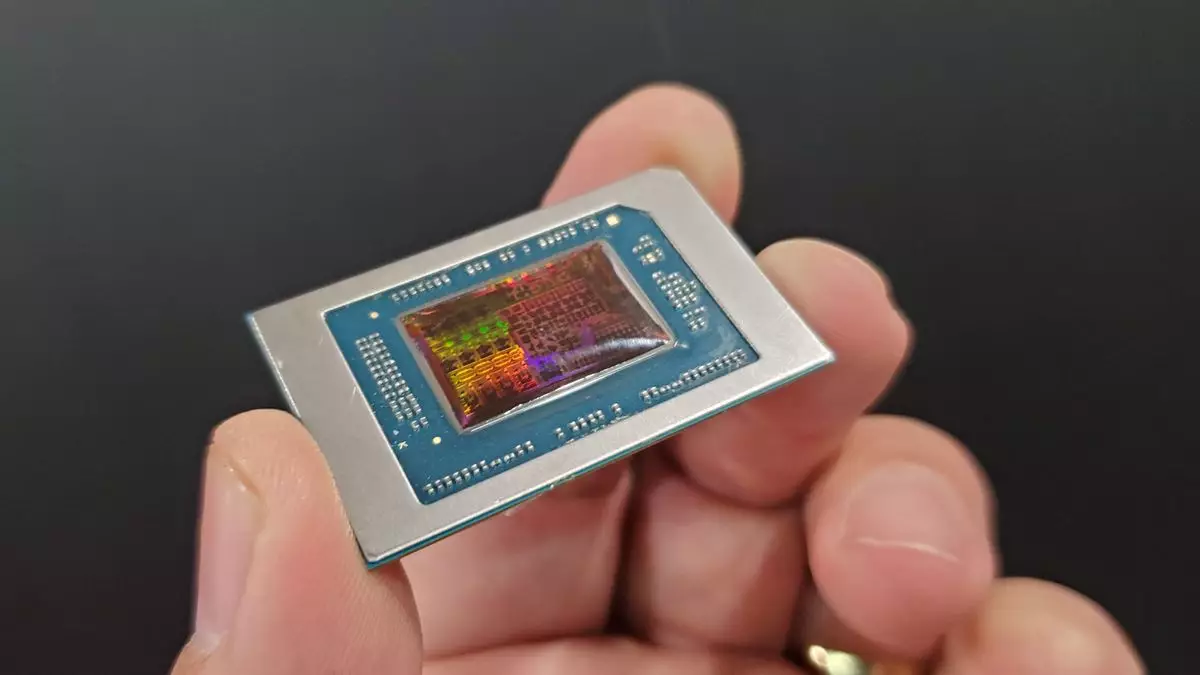AMD’s Strix Point APU is rapidly establishing itself as a pivotal player in the realms of laptops and handheld PCs, including sleek devices like the Razer Blade 16 and the OneXPlayer OneXFly F1 Pro. As technology enthusiasts eagerly anticipate its desktop variant, which is rumored for a Q4 2025 release, one can’t help but ponder the immense potential of this chip outside of mobile devices. The excitement around AMD’s efforts to rebrand this power-packed processor as the “Ryzen 9000G,” possibly adding an AI twist to the moniker, sets the stage for what’s likely to be a leap forward in performance and capability for compact computing.
Strix Point’s Architecture: A Closer Look
The architecture of the Strix Point APU captures attention with its impressive configuration. Equipped with up to 12 CPU cores divided between four robust Zen 5 cores and eight compact Zen 5c cores, the chip not only promises solid performance but also versatility, allowing it to handle both intensive tasks and everyday computing with grace. Coupled with 16 RDNA 3.5 graphics compute units, the graphics performance is expected to be exemplary—a feature that could easily make it suitable for casual gaming and multimedia tasks.
One standout aspect is the integration of an AI-driven neural processing unit (NPU), boasting an astonishing 55 TOPS (trillions of operations per second). This capability positions Strix Point not just as a traditional APU but as a potential powerhouse for AI applications, machine learning, and advanced tasks that lean heavily on such computations. The expectation that this chip will be packaged for the AM5 socket means that it will likely work with a variety of existing AMD-compatible motherboards, enhancing its appeal to consumers looking to upgrade their systems without overhauling their entire setup.
Desktop Dreams: The Transition to Mini PCs
As AMD gears up to launch the desktop version of Strix Point, the enthusiasm around this chip extends to the mini PC market. While traditional desktop setups with discrete GPUs cater to hardcore gamers and professionals, there is a burgeoning demand for compact and efficient solutions. The mini PC form factor minimizes space while maximizing performance—an ethos perfectly embodied by the anticipated desktop Strix Point. Think about devices like the Ayaneo Retro Mini PC AM01S, which aims to provide the enticing combination of portability and power.
Unlike razor-sharp performance for gaming that exceeds the demands of most users, Strix Point is positioned as a stellar all-rounder. Its compact size, efficiency in handling moderate gaming, and lightweight computing tasks make it an attractive option for casual users who prioritize space and usability over raw power. Personal computing continues to evolve, and AMD seems to recognize a gap in the market, leading to innovation that speaks directly to the needs of contemporary consumers.
Pricing and Market Influence
Though concrete details on pricing and availability for the desktop version of the Strix Point remain speculative, it’s reasonable to expect a more competitive pricing structure compared to its mobile counterpart, the AMD Ryzen AI 9 HX 370. Given that mobile processors typically command higher prices in the marketplace, the desktop iteration could provide a more cost-effective alternative for mini PC manufacturers and consumers alike.
In an era where powerful, yet compact PCs are becoming the norm, AMD’s approach demonstrates their commitment to not only enhancing performance but also making such technologies accessible to a broader audience. The appeal of a reasonably priced, high-performance chip in the burgeoning mini PC sector could stimulate competition and foster further innovation—effectively challenging giants in the realm of compact computing.
The Strix Point APU is poised to shake up the tech landscape. As we approach its anticipated desktop launch, excitement builds around the potential applications and advancements it could herald for both mobile and miniature computing experiences, reinforcing AMD’s position as a true innovator in the processor market.

